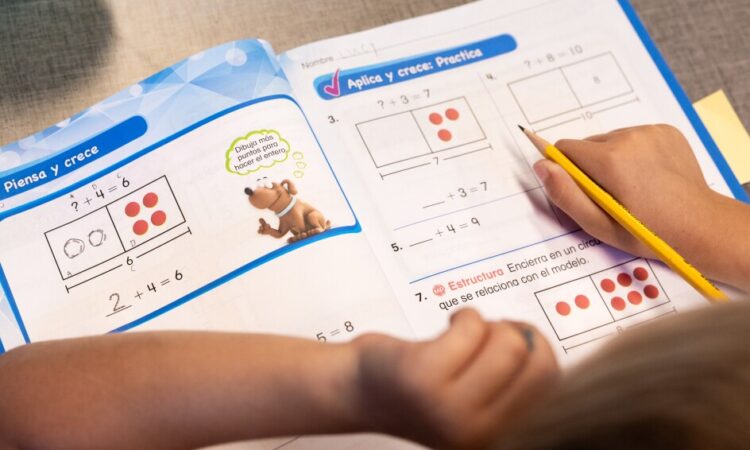
Six years ago, Ensemble Learning, an organization dedicated to helping dual-language programs through curriculum building and professional development, received a federal grant to support its efforts in one school district. Ensemble Learning then partnered with the Texas Education Agency to expand the district’s quality of dual-language instruction.
The initiative is known as the Texas Dual Language Project, in which Texas’ education agency and Ensemble Learning worked to create standards for dual-language teaching and coaching for teachers. The two groups worked closely with educators in Manor Independent School District in Manor, Texas, to design a program to support dual-language teachers and improve overall student performance.
As the project wraps up this year, Education Week spoke with two leaders at Ensemble Learning — Managing Director Julie Lara and Multilingual Learning Specialist Eileen Salinas — who reflected on the project and its impact on dual-language immersion programs in Texas.
This conversation has been edited for length and clarity.
The project started with the development of a framework for dual-language.
Lara: Prior to my role at Ensemble Learning, I was the director [of emerging bilingual support at the] Texas Education Agency. In 2019, HB3 charged the Texas Education Agency, which is my team, to create a framework for dual-language for the state. I contracted Ensemble Learning to help facilitate the development of that framework.
Once the development of the framework was done, the agency tried to start the process of rolling it out and scaling it in Texas. [In 2021], there was a federal grant open from the Office of English Language Acquisition within the Department of Education. Ensemble Learning was familiar with the development of the framework and was able to secure a five-year grant.
Districts were hesitant to participate at first.
Salinas: Ultimately, the goal was to ensure multilingual learners have access to high-quality dual-language programming. We focused on building district and campus capacity. We supported leaders as well as teachers to sustain the [dual-language] program, so [we were] coaching and supporting at all levels. We also supported teachers to help them pass the [bilingual teaching] certification.

[The project] is the first of its kind in the state; districts were initially afraid of opening their doors to us and being able to see behind that curtain of what might be happening in dual-language programming. It was challenging to keep the program sustainable for directors because the research for implementation in these districts is very new. A lot of [the barriers had to do with] leadership turnover as well as leadership priorities to keep the program sustainable for districts.
[But] Manor was an enthusiastic [school] district and willing to really join in. They emphasized: ‘Okay, we need support with our dual-language programming. We are very interested in this grant. Please come in.’ They immediately gave us five campuses … [so Ensemble Learning could] come in and support those teachers.
The program sought to reframe misunderstandings about dual-language.
Salinas: One of the misconceptions about dual-language [is] that often it’s more of a language learning program instead of an academic program. Those misconceptions often prioritize English language learning over the goal of [communicating in] both languages. [Ensemble Learning ] worked to refrain those misconceptions; that [dual-language] was an academic program. They also worked to build leadership and teacher capacity, and positioned dual-language as a literacy solution.
Then, [another barrier was the] bilingual teacher shortage we have seen over the [past] four years. To help alleviate that, we coached several long-term substitutes, even in their first year, to help them do the best for their students.
One of the things that we really discussed was how do we make [educators] understood [by] our students—by providing coaching for the existing staff, modeling those literacy strategies, as well as helping teachers script themselves out [to limit how much time they speak during class].
The program encouraged teachers to learn to stand down, so that students could develop their language skills.
Salinas: If the student may not have that language yet, what vocabulary are we providing? What images, what hand movements, in terms of total physical response, [what] sentence stems [are we providing?]
One of the most important things that came out of [scripting teachers] was opportunities for student-to-student engagement and discussion. If we’re requiring our students to come out with two languages, how much time are we providing for them to use that language, to listen, speak, read, and write in the languages with each other?
We really worked on scripting ourselves to minimize the amount that we’re talking because the one who’s talking is learning. We minimize ourselves as teachers, and we allow more time for our students to engage and discuss and investigate.
Initial results show a link between teacher support and student success.

Lara: There were overall positive trends with student data, achievement, and teacher perceptions. The coaching relationship between Eileen [Salinas] and her teachers—it’s almost like professional therapy.
Nobody knows what she and her teacher talked about, because it’s a very vulnerable space. The principal might get a summary, or Eileen, or another coach may have said to the principal, ‘These are some things your teachers are working on.’ The teachers appreciated that coaching relationship, that was consistent and stayed supportive.
The qualitative trend was students, teachers, and principals were more consistent, they were happier, they felt more supported, and they felt more effective. The students felt more successful. Those are big global trends from the report that are consistent with what we find when you get good quality professional development.
Manor has continued to have us support them, even outside of this, and so that speaks a lot to the relationships and the teacher, and that the district is listening to their teachers when their teachers say, ‘This is a good thing for me. I needed this support, and it works.’
Dual-language teachers expressed feelings of isolation and burnout.
Salinas: When we’ve talked about teacher turnover and availability, at times, teachers may have felt isolated as they were the only dual-language teacher in their grade level. There was a huge shift in Manor once dual-language teachers shared lessons and problem-solved with their colleagues across campuses.
They worked together throughout these past two years to create a biliteracy curriculum that was culturally relevant. Educators received biliteracy strategies to help them focus on instruction to support their students.
[They also] built banks of high-quality Spanish resources so that teachers did not have to translate everything. Those support systems helped the district as a whole. In turn, principals and educational leaders were also coached to provide time structures and recognition for teachers who were still growing in their academic Spanish as well as their academic knowledge.
Our work within [the Texas Dual Language Project] was about shifting that pressure from the individual teachers to be able to perform, and more of a sustainable program model that will lift up the teacher and the student.





